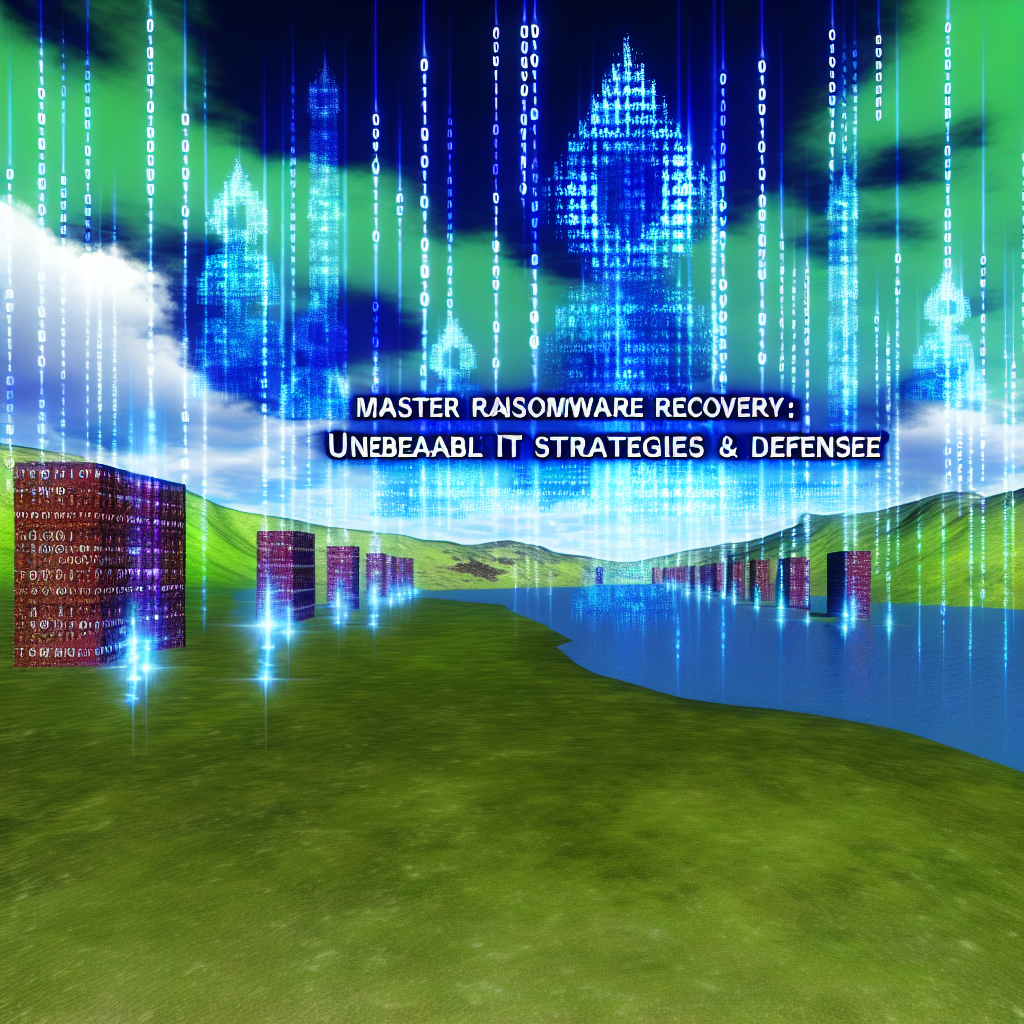Understanding Zero Trust: A Modern Approach to Cybersecurity Audit
In the rapidly evolving landscape of digital technology, the concept of Zero Trust has emerged as a pivotal strategy in modern cybersecurity audits. As organizations increasingly rely on complex IT infrastructures, the traditional perimeter-based security models have become insufficient. This shift necessitates a more robust approach, where the Zero Trust model plays a crucial role. At its core, Zero Trust operates on the principle of “never trust, always verify,” which fundamentally changes how access to resources is managed and monitored.
The Zero Trust model is not merely a technological solution but a comprehensive framework that integrates seamlessly into cybersecurity audits. It emphasizes the importance of verifying every request as though it originates from an open network. This approach ensures that no user or system is inherently trusted, regardless of whether they are inside or outside the network perimeter. Consequently, this model requires continuous authentication and authorization, leveraging advanced technologies such as multi-factor authentication, identity and access management, and micro-segmentation.
Incorporating Zero Trust into cybersecurity audits involves a meticulous evaluation of an organization’s security posture. Auditors must assess how effectively the Zero Trust principles are implemented across the IT infrastructure. This includes examining the policies and procedures that govern access controls, data protection, and threat detection. By doing so, auditors can identify potential vulnerabilities and recommend strategies to mitigate risks. Moreover, the audit process itself benefits from the Zero Trust model, as it provides a structured framework for evaluating security measures and ensuring compliance with industry standards.
Transitioning to a Zero Trust architecture requires a strategic approach that aligns with modern IT strategies. Organizations must first gain a comprehensive understanding of their current security landscape, identifying critical assets and potential threats. This understanding forms the foundation for developing a Zero Trust strategy that is tailored to the organization’s specific needs. Furthermore, it is essential to foster a culture of security awareness among employees, as human error remains a significant factor in cybersecurity breaches. Training programs and regular updates on security protocols can enhance the overall effectiveness of the Zero Trust model.
As organizations implement Zero Trust, they must also consider the integration of advanced technologies such as artificial intelligence and machine learning. These technologies can enhance the capabilities of Zero Trust by providing real-time threat intelligence and automating responses to potential security incidents. For instance, machine learning algorithms can analyze vast amounts of data to detect anomalies and predict potential threats, enabling organizations to respond proactively.
In conclusion, the Zero Trust model represents a paradigm shift in how organizations approach cybersecurity audits and IT strategies. By adopting this model, organizations can enhance their security posture, protect critical assets, and ensure compliance with regulatory requirements. The integration of Zero Trust into cybersecurity audits not only strengthens the audit process but also provides a comprehensive framework for managing and mitigating risks in an increasingly complex digital environment. As cyber threats continue to evolve, embracing Zero Trust is not just an option but a necessity for organizations seeking to safeguard their digital assets and maintain trust with their stakeholders.
Firewall Setup Best Practices for Enhanced Threat Detection
In the ever-evolving landscape of cybersecurity, the importance of robust firewall setup cannot be overstated. As organizations increasingly rely on digital infrastructure, the need for enhanced threat detection mechanisms becomes paramount. Firewalls serve as the first line of defense against cyber threats, acting as a barrier between internal networks and external threats. To ensure optimal performance and security, adhering to best practices in firewall setup is essential.
To begin with, understanding the specific needs of your organization is crucial. This involves conducting a thorough risk assessment to identify potential vulnerabilities and the types of threats most likely to target your network. By tailoring your firewall configuration to address these specific risks, you can significantly enhance your threat detection capabilities. Moreover, it is important to regularly update your firewall rules and policies to adapt to the changing threat landscape. Cyber threats are constantly evolving, and outdated rules can leave your network vulnerable to new attack vectors.
In addition to regular updates, implementing a layered security approach can further bolster your firewall’s effectiveness. This involves integrating your firewall with other security tools such as intrusion detection systems (IDS) and intrusion prevention systems (IPS). By doing so, you create a multi-faceted defense strategy that can detect and respond to threats more efficiently. Furthermore, enabling logging and monitoring features on your firewall is essential for maintaining visibility into network activity. This allows for real-time threat detection and facilitates the identification of suspicious behavior that may indicate a security breach.
Another critical aspect of firewall setup is the principle of least privilege. This involves configuring your firewall to allow only the necessary traffic required for business operations while blocking all other traffic by default. By minimizing the number of open ports and services, you reduce the attack surface and limit potential entry points for cybercriminals. Additionally, segmenting your network into smaller, isolated segments can prevent the lateral movement of threats within your network, thereby containing potential breaches.
Moreover, it is vital to conduct regular firewall audits to ensure compliance with security policies and industry standards. These audits can help identify misconfigurations, outdated rules, and other vulnerabilities that may compromise your network’s security. By addressing these issues promptly, you can maintain a robust security posture and protect your organization from potential threats.
Furthermore, employee training and awareness play a significant role in the effectiveness of your firewall setup. Educating staff about the importance of cybersecurity and the role of firewalls in protecting sensitive data can foster a culture of security within your organization. Employees should be trained to recognize potential threats and understand the procedures for reporting suspicious activity.
In conclusion, setting up a firewall with best practices in mind is a critical component of modern IT strategies for enhanced threat detection. By conducting thorough risk assessments, implementing a layered security approach, adhering to the principle of least privilege, and conducting regular audits, organizations can significantly improve their cybersecurity posture. Additionally, fostering a culture of security through employee training and awareness can further enhance the effectiveness of firewall setups. As cyber threats continue to evolve, staying vigilant and proactive in your firewall configuration and management is essential for safeguarding your organization’s digital assets.
The Role of Cybersecurity Audits in IT Compliance
In the rapidly evolving landscape of information technology, the importance of cybersecurity cannot be overstated. As organizations increasingly rely on digital infrastructures, the need for robust cybersecurity measures becomes paramount. One critical component in ensuring the security and integrity of IT systems is the cybersecurity audit. These audits play a pivotal role in IT compliance, serving as a comprehensive evaluation of an organization’s security posture and its adherence to regulatory requirements.
Cybersecurity audits are systematic examinations of an organization’s information systems, policies, and procedures. They are designed to identify vulnerabilities, assess the effectiveness of security controls, and ensure compliance with relevant laws and regulations. In an era where data breaches and cyber threats are becoming more sophisticated, these audits provide a structured approach to identifying potential risks and implementing necessary safeguards.
The role of cybersecurity audits in IT compliance is multifaceted. Firstly, they help organizations align their security practices with industry standards and regulatory frameworks. Compliance with regulations such as the General Data Protection Regulation (GDPR), the Health Insurance Portability and Accountability Act (HIPAA), and the Payment Card Industry Data Security Standard (PCI DSS) is not only a legal obligation but also a critical component of maintaining trust with clients and stakeholders. By conducting regular audits, organizations can ensure that they are meeting these requirements and avoiding potential legal and financial penalties.
Moreover, cybersecurity audits provide valuable insights into an organization’s security posture. They offer a detailed analysis of existing security measures, highlighting areas of strength and identifying weaknesses that need to be addressed. This information is crucial for developing effective IT strategies that are both proactive and responsive to emerging threats. By understanding their vulnerabilities, organizations can prioritize their security efforts, allocate resources more efficiently, and implement targeted improvements to their IT infrastructure.
In addition to enhancing security and compliance, cybersecurity audits also foster a culture of continuous improvement within organizations. They encourage a proactive approach to cybersecurity, where regular assessments and updates become an integral part of the IT strategy. This ongoing process not only helps in maintaining compliance but also ensures that organizations are well-prepared to adapt to the ever-changing threat landscape.
Furthermore, cybersecurity audits can enhance communication and collaboration across different departments within an organization. By involving various stakeholders in the audit process, organizations can foster a shared understanding of cybersecurity challenges and solutions. This collaborative approach ensures that security measures are integrated into all aspects of the business, from IT operations to human resources and beyond.
In conclusion, cybersecurity audits are an essential tool in the arsenal of modern IT strategies. They play a crucial role in ensuring IT compliance, enhancing security measures, and fostering a culture of continuous improvement. As cyber threats continue to evolve, organizations must prioritize regular audits to safeguard their digital assets and maintain the trust of their clients and stakeholders. By doing so, they not only protect themselves from potential breaches but also position themselves as leaders in the field of cybersecurity, demonstrating a commitment to excellence and resilience in the face of adversity.
Network Intrusion Prevention: Strategies for Modern IT Environments
In the rapidly evolving landscape of modern IT environments, network intrusion prevention has become a cornerstone of cybersecurity strategies. As organizations increasingly rely on digital infrastructures, the need to protect sensitive data and maintain operational integrity has never been more critical. Network intrusion prevention systems (NIPS) play a pivotal role in safeguarding these environments by detecting and preventing unauthorized access and malicious activities. To effectively implement these systems, it is essential to understand the strategies that underpin their success.
One of the primary strategies for network intrusion prevention is the integration of advanced threat intelligence. By leveraging real-time data and insights from global threat landscapes, organizations can enhance their ability to identify and mitigate potential threats before they materialize. This proactive approach not only helps in recognizing known threats but also in anticipating emerging ones. Consequently, incorporating threat intelligence into NIPS allows for a more dynamic and responsive defense mechanism, which is crucial in the face of sophisticated cyber threats.
Moreover, the deployment of machine learning algorithms within NIPS has revolutionized the way threats are detected and managed. Machine learning enables systems to learn from historical data, identify patterns, and predict potential intrusions with greater accuracy. This capability is particularly beneficial in distinguishing between legitimate network traffic and anomalous activities that may indicate a security breach. As a result, machine learning enhances the precision of intrusion detection, reducing false positives and allowing security teams to focus on genuine threats.
In addition to technological advancements, the human element remains a vital component of network intrusion prevention strategies. Regular training and awareness programs for IT staff and end-users are essential in fostering a culture of cybersecurity vigilance. By educating employees about the latest threats and best practices, organizations can minimize the risk of human error, which is often a significant factor in security breaches. Furthermore, fostering collaboration between IT teams and other departments ensures a comprehensive approach to cybersecurity, where everyone plays a role in maintaining network integrity.
Another critical aspect of network intrusion prevention is the implementation of robust access control measures. By enforcing strict authentication protocols and limiting user access to sensitive data, organizations can significantly reduce the likelihood of unauthorized intrusions. Multi-factor authentication (MFA) is a widely adopted practice that adds an extra layer of security, making it more challenging for attackers to gain access to critical systems. Additionally, regular audits and reviews of access permissions help ensure that only authorized personnel have access to sensitive information, thereby minimizing potential vulnerabilities.
Furthermore, the adoption of a zero-trust architecture is gaining traction as a formidable strategy in network intrusion prevention. This approach operates on the principle of “never trust, always verify,” meaning that no user or device is inherently trusted, regardless of their location within the network. By continuously validating the identity and integrity of users and devices, zero-trust architecture provides a robust framework for preventing unauthorized access and mitigating the risk of lateral movement within the network.
In conclusion, network intrusion prevention is an indispensable component of modern IT strategies, requiring a multifaceted approach that combines advanced technologies, human vigilance, and stringent access controls. By integrating threat intelligence, machine learning, and zero-trust principles, organizations can enhance their ability to detect and prevent intrusions effectively. As cyber threats continue to evolve, staying ahead of potential risks through continuous adaptation and innovation is paramount in safeguarding digital infrastructures and ensuring the resilience of modern IT environments.
Endpoint Protection: Essential Tactics for a Robust Cybersecurity Strategy
In the rapidly evolving landscape of cybersecurity, endpoint protection has emerged as a critical component of a robust cybersecurity strategy. As organizations increasingly rely on a diverse array of devices to conduct business, the need to secure these endpoints has never been more pressing. Endpoints, which include laptops, desktops, mobile devices, and servers, serve as gateways to an organization’s network and data. Consequently, they are prime targets for cybercriminals seeking to exploit vulnerabilities. To mitigate these risks, organizations must adopt comprehensive endpoint protection tactics that align with modern IT strategies.
One of the foundational elements of effective endpoint protection is the implementation of advanced antivirus and anti-malware solutions. These tools are designed to detect, prevent, and respond to a wide range of threats, including viruses, ransomware, and spyware. By leveraging real-time threat intelligence and machine learning algorithms, modern antivirus solutions can identify and neutralize threats before they cause significant harm. However, relying solely on antivirus software is insufficient in today’s complex threat environment. Organizations must also employ additional layers of security to ensure comprehensive protection.
Another essential tactic is the deployment of endpoint detection and response (EDR) solutions. EDR tools provide continuous monitoring and analysis of endpoint activities, enabling organizations to detect suspicious behavior and respond swiftly to potential threats. By offering deep visibility into endpoint processes and network connections, EDR solutions empower security teams to investigate incidents thoroughly and take appropriate action to mitigate risks. This proactive approach is crucial in minimizing the impact of cyberattacks and preventing data breaches.
In addition to technological solutions, organizations must prioritize the implementation of robust access controls. This involves enforcing strict authentication measures, such as multi-factor authentication (MFA), to verify the identity of users accessing sensitive data and systems. By requiring multiple forms of verification, MFA significantly reduces the likelihood of unauthorized access, even if login credentials are compromised. Furthermore, organizations should adopt the principle of least privilege, ensuring that users have access only to the resources necessary for their roles. This minimizes the potential damage that can be caused by compromised accounts.
Moreover, regular software updates and patch management are vital components of endpoint protection. Cybercriminals often exploit vulnerabilities in outdated software to gain unauthorized access to systems. By maintaining up-to-date software and promptly applying security patches, organizations can close potential entry points for attackers. Automated patch management solutions can streamline this process, ensuring that all endpoints are consistently protected against known vulnerabilities.
Employee education and awareness also play a crucial role in endpoint protection. Human error remains one of the leading causes of security breaches, often resulting from phishing attacks or inadvertent data exposure. By providing regular training sessions and resources, organizations can equip employees with the knowledge and skills needed to recognize and respond to potential threats. Cultivating a culture of cybersecurity awareness empowers employees to act as the first line of defense against cyberattacks.
In conclusion, endpoint protection is an indispensable aspect of a robust cybersecurity strategy. By integrating advanced antivirus solutions, EDR tools, stringent access controls, regular software updates, and comprehensive employee training, organizations can effectively safeguard their endpoints against a myriad of cyber threats. As cybercriminals continue to develop more sophisticated attack methods, it is imperative for organizations to remain vigilant and adapt their endpoint protection strategies to address emerging challenges. Through a combination of technological innovation and proactive security measures, organizations can fortify their defenses and protect their valuable assets in an increasingly digital world.
Enhance your organization’s security posture with our expert insights on cybersecurity audits and modern IT strategies. Discover more by visiting our website today!











